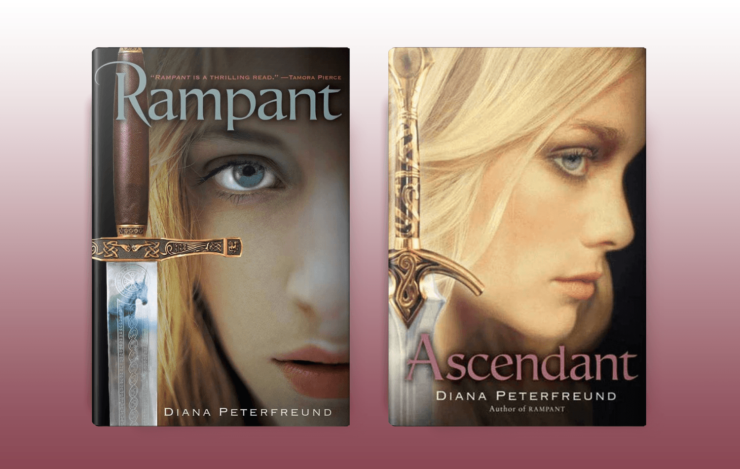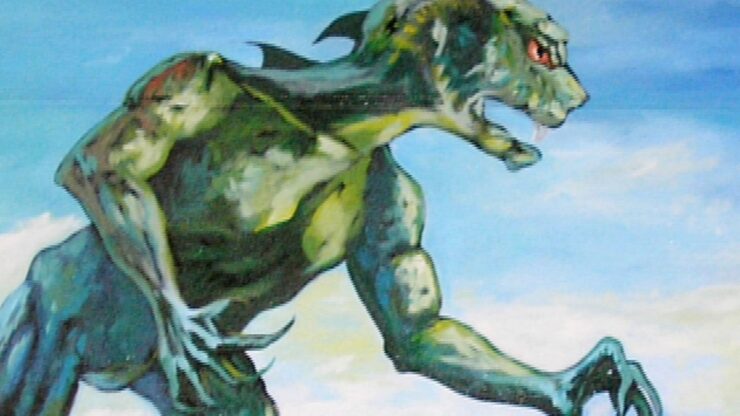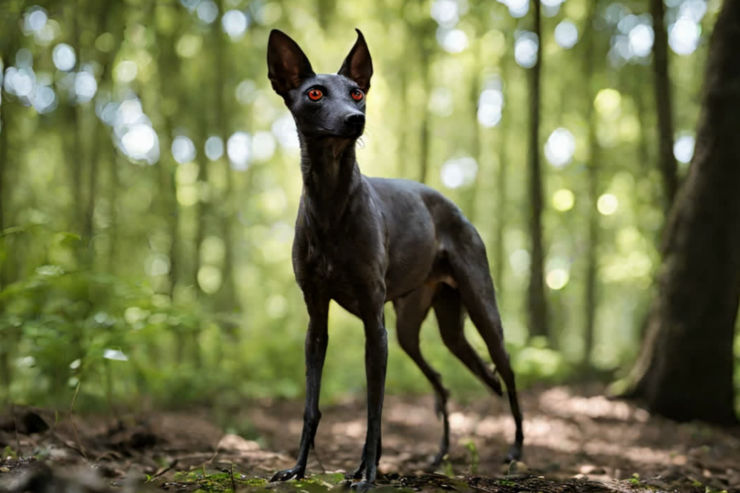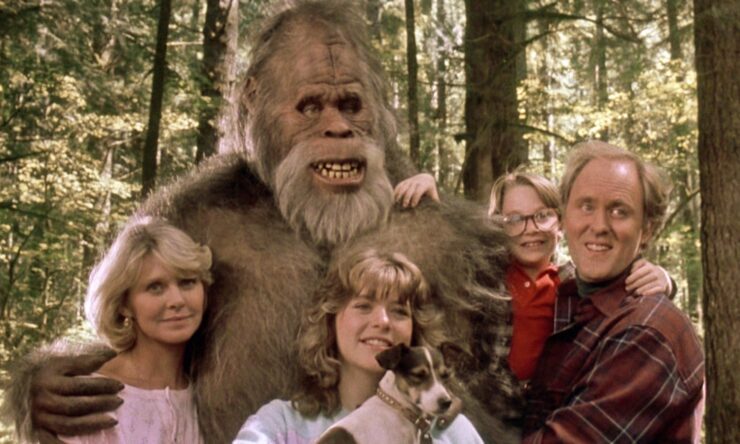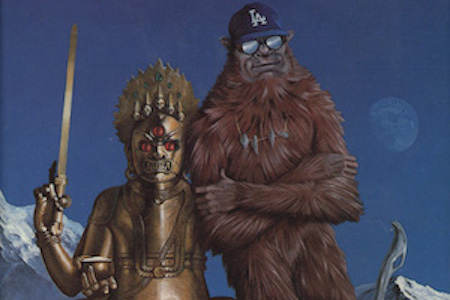A chance reference in a comment on an earlier article led me to Diana Peterfreund’s Killer Unicorns, and I could not be more grateful. Which is saying something, because the comments on this series so far have been both entertaining and enlightening. Thank you all, and please keep them coming.
Meanwhile, I have had a splendid time with the two volumes of what we can hope will be at least a trilogy. Rampant and its sequel, Ascendant, have a certain air of Buffy Meets (and Slays) The Last Unicorn. But like all really good homages, they take off in directions that are entirely their own.
Peterfreund hits the right notes from the start. Astrid is fifteen, doing a fairly decent job (all things considered) of fitting in in high school, and dating the cool guy on campus. She’s trying to play the game of teen sex, making her away around the bases, but she’s not quite ready for that home run.
As Rampant opens, Astrid is babysitting in deepest suburbia. We learn that her family life is a little weird and her mom, Lilith, is a lot weird. Lilith threw away a highly promising academic career by becoming fixated on one particular species of mythical beast, the unicorn. Astrid spends a great deal of time living this down, while living with Lilith in an apartment over her uncle’s garage. There is no father in the picture and never has been.
Lilith has raised Astrid to be downright phobic about unicorns. There is nothing sparkly or rainbow-y or sweet about the unicorns Lilith is obsessed with. Lilith’s unicorns are vicious predators whose horns are filled with deadly venom.
They are also, to Lilith’s regret, extinct. Lilith claims to be the descendant of an ancient line of unicorn hunters, one of whom, in the nineteenth century, killed off the last of the unicorns. Nothing remains of them but legend, myth, and a tradition of arcane and obscure knowledge. Lilith has devoted her life to tracking down as much of the lore as she can.
Astrid just wants to be normal and get to home base with Brandt. Eventually. When she’s ready.
Then comes the night of the babysitting gig in a house filled with sparkly unicorn décor, which gives Astrid the horrors. And a sort of date with Brandt, supposedly to study French, but neither Astrid nor Brandt expects to do a lot of actual studying. This could be the night, Astrid thinks. Maybe.
But the universe has other plans. Brandt convinces Astrid to take their study date into the woods—still in sight and sound of the house, but nicely secluded. Just as they settle in for some serious making out, Astrid’s world breaks wide open.
A unicorn attacks Brandt. A real, live unicorn that bows before Astrid and stabs her date with its venomous horn. Astrid does the only thing she can think of to do: she calls her mom.
Lilith arrives with the speed of 911, bringing with her an artifact from her travels. It’s a vial filled with something called the Remedy. She administers it to Brandt, and saves his life.
The aftermath changes Astrid’s life forever. Brandt dumps her hard. Her best friend turns on her. She becomes a high-school pariah.
Lilith has a solution. Unicorns, she has discovered, have emerged somehow from extinction—and so has the ancient order of virgin hunters who defended humanity against those most terrible of predators. Lilith has convinced the mother house of the order in Rome to accept Astrid for training. Her way is paid, her flights are booked. She’s shipped off to a future she does not want and a destiny she has no desire to embrace.
She rapidly discovers that nothing is as it seems. The order consists of the ramshackle ruin of an ancient convent, a girl her age named Cory who is just as obsessed with the history of unicorns and hunters as Lilith, the girl’s hunky older brother who serves as headmaster, a handful of young women from various parts of Europe and Asia—and a baby unicorn named Bonegrinder, with whom Cory has an extremely complicated relationship. They’re doing their best to resurrect traditions that have been all but lost.
And the unicorns are coming back. Everywhere. And killing. Bloodily. All over the world.
That’s not the whole of it. Unicorns kill, but they also heal. The Remedy is a cure for all ills, even death. Its secret has been lost, but a pharmaceutical company has been trying to rediscover it.
The head of the company is bankrolling the order. He’s paying for their training, and paying them to deliver unicorn carcasses for study. There’s a great deal more to it, as Astrid and her fellow hunters discover, and some of it is very dark and disturbing indeed.
The truth about unicorns is much more complicated than Astrid could have imagined. So is the truth about hunters, and especially about Astrid’s own family. What she’s been taught as history turns out to be legend when it’s not outright myth.
She has powerful and devastating choices to make. None of them is easy, and some of them nearly destroy her. By the end of Ascendant, she has changed irrevocably, but it’s clear that’s not the whole of the story. Peterfreund has said on her website that she has another volume in mind, and its title is Triumphant. That tells me a few things about the directions in which the story might go.
Buy the Book
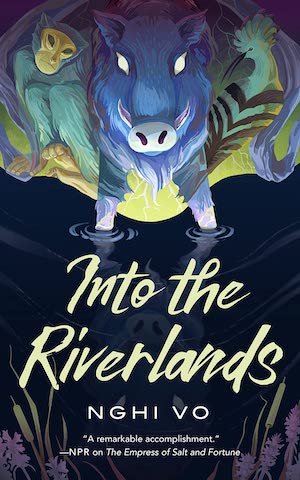

Into the Riverlands
It’s well written and fast-paced and full of lively and memorable characters. Good stuff; solid urban fantasy, great YA adventure. What makes it work for me in particular is the worldbuilding.
The subgenre is full of teen heroines who just want to be normal, but who have powers and destinies that cannot be denied. This particular universe is built right in my wheelhouse. Astrid is the direct descendant of Alexander the Great, whose famous mount, Bucephalus, was not a black horse of Nisaian descent, but a gigantic Persian unicorn, a karkadann—the mythologized incarnation of the Indian rhinoceros.
It was Bucephalus’ power that enabled Alexander to conquer half of Asia, and Bucephalus’ departure that ended his campaigns and, soon thereafter, his life. His female descendants inherited great magic and great powers, but only as long as they remained virgins. Those powers gave them the ability to both hunt and control unicorns, and rendered them immune to unicorn venom.
They could choose to give up their powers by having sex with men—or they might have those powers stripped from them without their consent. Then they became as vulnerable as any other humans. We never do find out why Alexander was the only male who ever managed to control a unicorn, or how he did it without remaining a virgin. Maybe that’s to be explained in the finale.
Still. Alexander. And Bucephalus. And a taxonomy of unicorns that pulls in both Asian and European varieties, each of which has its own separate set of characteristics.
They’re not just horrible monsters, either. They have their own reasons for being what they are. The more Astrid learns about them, the more she understands how complicated her role actually is—not just to hunt and kill them, but to control them. Even, as difficult as that may be for her to accept, to advocate for them. To protect them.
This is good stuff. Sweet and gentle it emphatically is not. Parts of it are nothing short of brutal. But it works. I really do hope Peterfreund manages to write that last volume. If and when she does, I’ll be there for it.
Judith Tarr is a lifelong horse person. She supports her habit by writing works of fantasy and science fiction as well as historical novels, many of which have been published as ebooks. She’s written a primer for writers who want to write about horses: Writing Horses: The Fine Art of Getting It Right. She lives near Tucson, Arizona with a herd of Lipizzans, a clowder of cats, and a blue-eyed dog.










